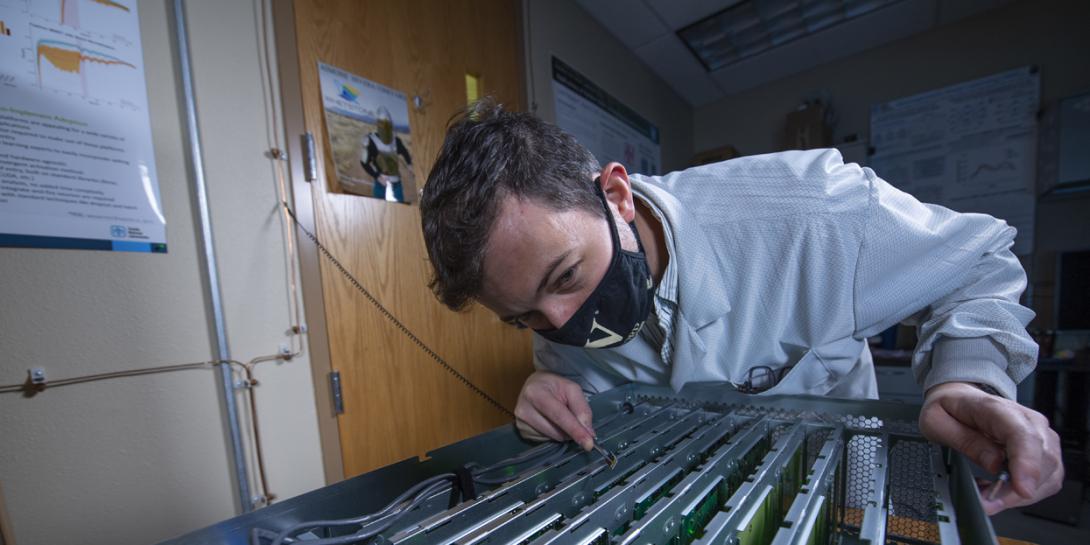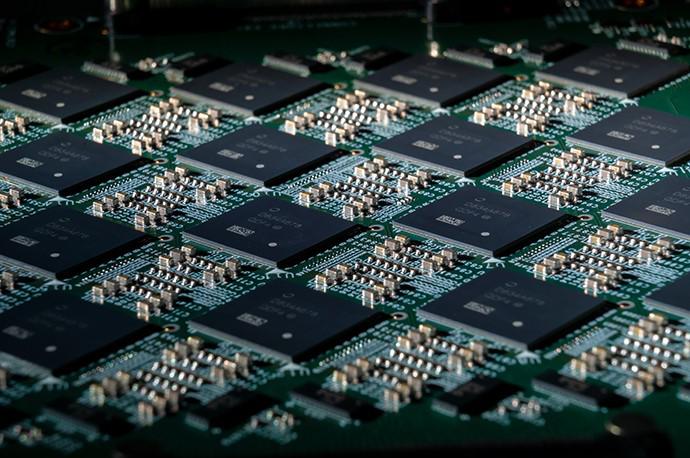Computers Getting Brain Power
An industry leader has delivered 50 million artificial neurons—a number roughly equivalent to the brain of a small mammal—to Sandia National Laboratories. Intel Corporation and Sandia will explore numerous potential uses from neural-inspired computing and plan to examine the effects on artificial intelligence in commercial and defense areas.
The neurons will be assembled to advance a relatively new kind of computing called neuromorphic that is based on the principles of the human brain. Its artificial components pass information in a similar way that living neurons electrically pulse only when a synapse in a complex circuit has absorbed enough charge to produce an electrical spike, researchers explain.
Modeled on the complex linking of neurons in the human brain, neuromorphic computers eventually may use far less electrical power and weigh much less than today’s personal computers.
“With a neuromorphic computer of this scale,” says Craig Vineyard, Sandia project leader, “we have a new tool to understand how brain-based computers are able to do impressive feats that we cannot currently do with ordinary computers.” Improved algorithms and computer circuitry can create wider applications for neuromorphic computers, he adds.
Computers with artificial neurons act through mathematical approximations, rather than forcing a problem’s solution into conventional computing paths that may contain a forest of inessential steps, Vineyard says.
Sandia manager of cognitive and emerging computing John Wagner explains that this very large neural computer will enable scientists to test how brain-inspired processors use information at increasingly realistic scales as they come to actually approximate the processing power of brains. “We expect to see new capabilities emerge as we use more and more neurons to solve a problem, just like happens in nature,” he says.
Scott Collis, director, Center for Computing Research, Sandia, relates that this shipment is the first in a three-year series of collaborator testbeds that will house increasingly sophisticated neural computers. “If research efforts prove successful, the total number of experimental neurons in the final model could reach 1 billion or more,” Collis predicts.
Neuromorphic computing plays a part in machine-learning achievements such as the neural circuits self-driving cars use to make critical decisions, classify vapors and aerosols in airports and identify an individual’s face out of a mass of random images. But experts in the field think such capabilities are only a start in improving machine learning in more complex fields such as remote sensing and intelligence analysis.
Director of Intel’s Neuromorphic Computing Lab Mike Davies relates that as high-demand and evolving workloads become increasingly important for our national security, Intel’s collaboration with Sandia will provide the tools to successfully scale neuromorphic computing solutions.
“Sandia’s initial work will lay the foundation for the later phase of our collaboration, which will include prototyping the software, algorithms and architectures in support of next-generation large-scale neuromorphic research systems,” he states.






Comments